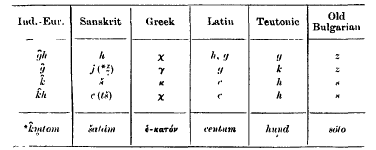No CrossRef data available.
Article contents
I. The Decipherment of the Hittite Language
Published online by Cambridge University Press: 15 March 2011
Extract
Among the most important results of philological research in recent years is the decipherment of the Hittite language by Dr. Friedrich Hrozný, Professor of Semitic Languages in the University of Vienna. Hrozný's account of his work is contained in the Mitteilungen der deutschen Orient-Gesellschaft (No. 15), and at the suggestion of my friend—now, alas, the late—Professor James Hope Moulton, I have summarized Hrozný's interim report for English readers.
- Type
- Articles
- Information
- Copyright
- Copyright © The Royal Asiatic Society 1919
References
page 3 note 1 Cf. Hall, , Ancient History of the Near East, pp. 341–68.Google Scholar
page 4 note 1 These tablets are now, for the most part, in the Imperial Museum at Constantinople. Hrozný divides them into three groups according to the places where they were found (A, B, and C). He himself has devoted most attention to group B, which was discovered by Makridy Bey in some rooms on the eastern side of the largest building of Bogházköi. For a detailed description of the site of the finds, see Ed. Meyer, 's Reich und Kultur der Chetiter, pp. 20–22Google Scholar, where a plan of this building (which he regards as a palace) is given.
page 4 note 2 A scientific periodical has been founded by Otto Weber under the name of Bogházköi-Studien for the discussion of the scientific problems raised by the Bogházköi inscriptions. In the first number, Professor Hrozný promises an exhaustive treatment of his results, of which we have only a preliminary sketch in the Mitteilungen.
page 6 note 1 Hrozný says this is probably better spelt wa-a-dar.
page 6 note 2 On tho particle -γε cf. Brugmann, Kurze rgl. Gr., § 851.
page 8 note 1 The following table will make the development clear:—

page 8 note 2 For an account of Tocharian, consult Feist, S.'s Kultur, Ausbreitung, und Herkunft der Iudogermanen, pp. 428–31.Google Scholar
page 11 note 1 Cf. Meyer, Eduard, Reich und Kultur der Chetiter (passim).Google Scholar
page 11 note 2 Cf. Michelis, E. de, L'origine degli Indo-Europei, ch. iii, pp. 84, 137.Google Scholar
page 12 note 1 Cf. Meyer, , op. cit., pp. 96, 134.Google Scholar
page 13 note 1 Since writing the above my attention has been directed by my friend and colleague, Mr. F. E. Corley, to. Professor R. M. Burrows's remarks on this subject in the very suggestive chapter on “The Labyrinth and the Minotaur” in his Discoveries in Crete. Speaking of the Tursha, Tursenoi, or Tyrrhenians he says: “Do Pliny's ‘Four Labyrinths’ reopen the question (of their origin)? Do Egypt, Knossos, Lemnos, Clusium form a chain that takes us to the origin of that most mysterious of all peoples, the Etruscans?” (op. cit., p. 124 et seq.).


